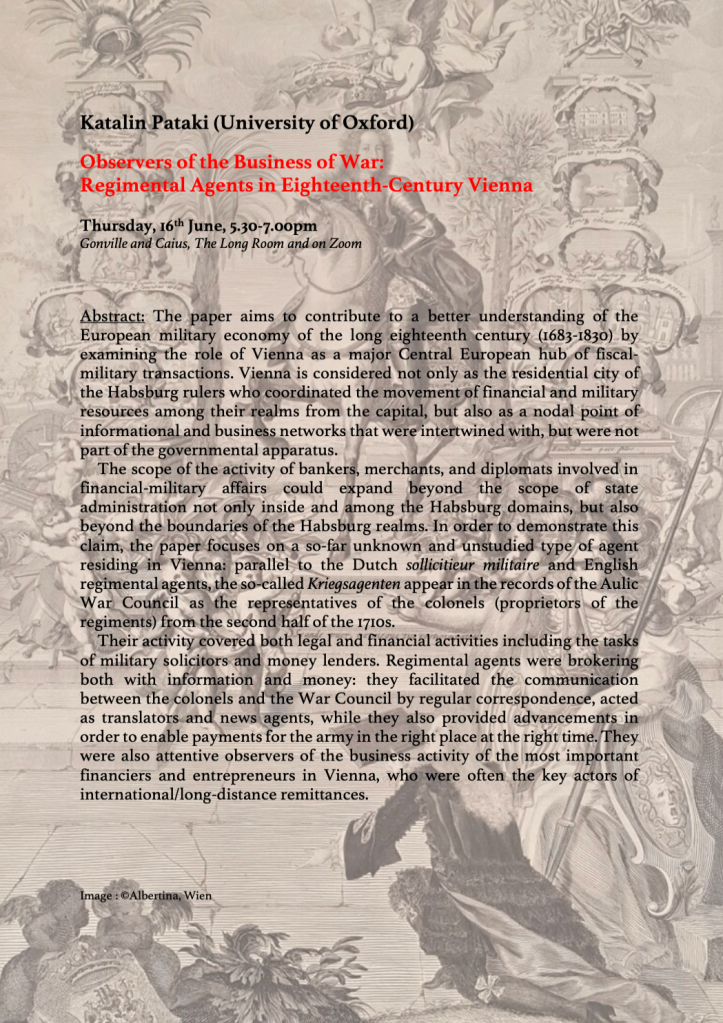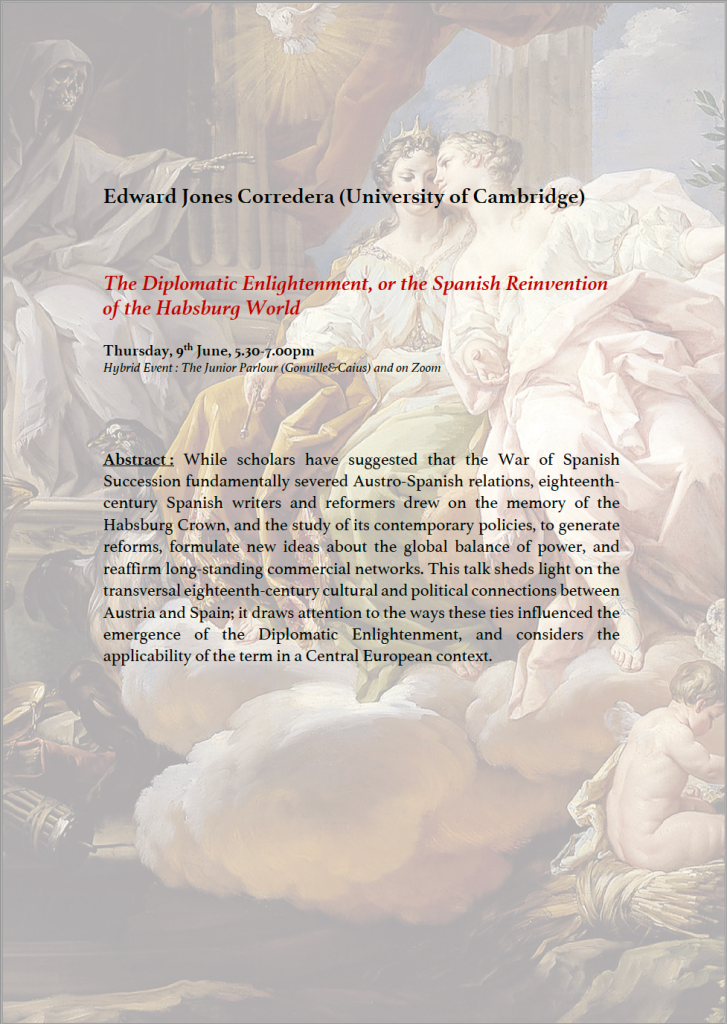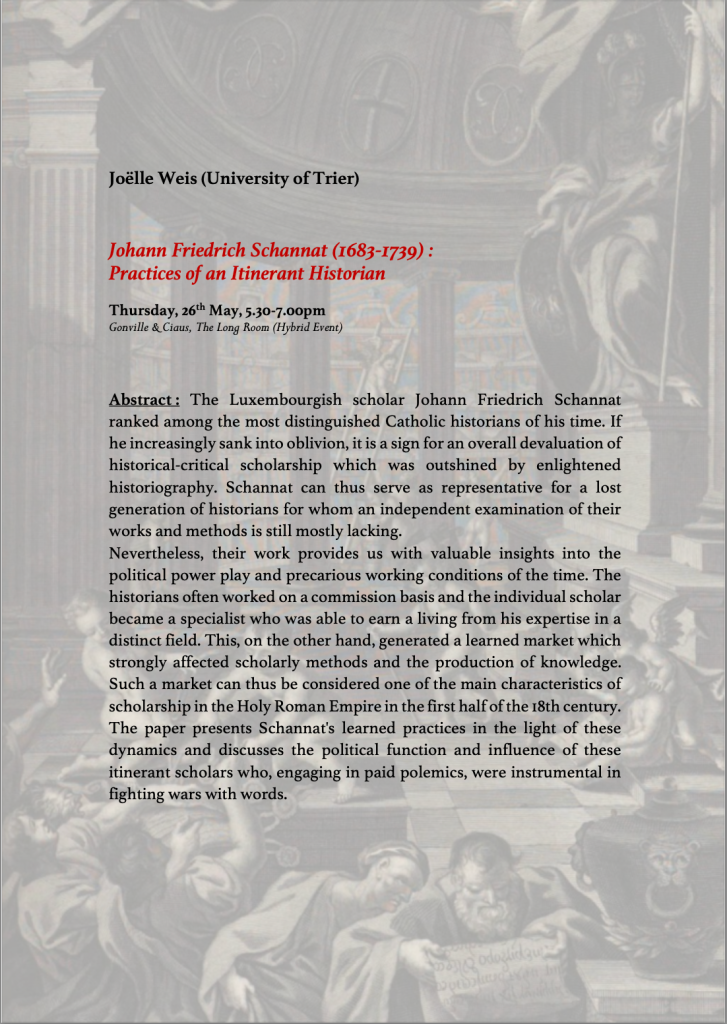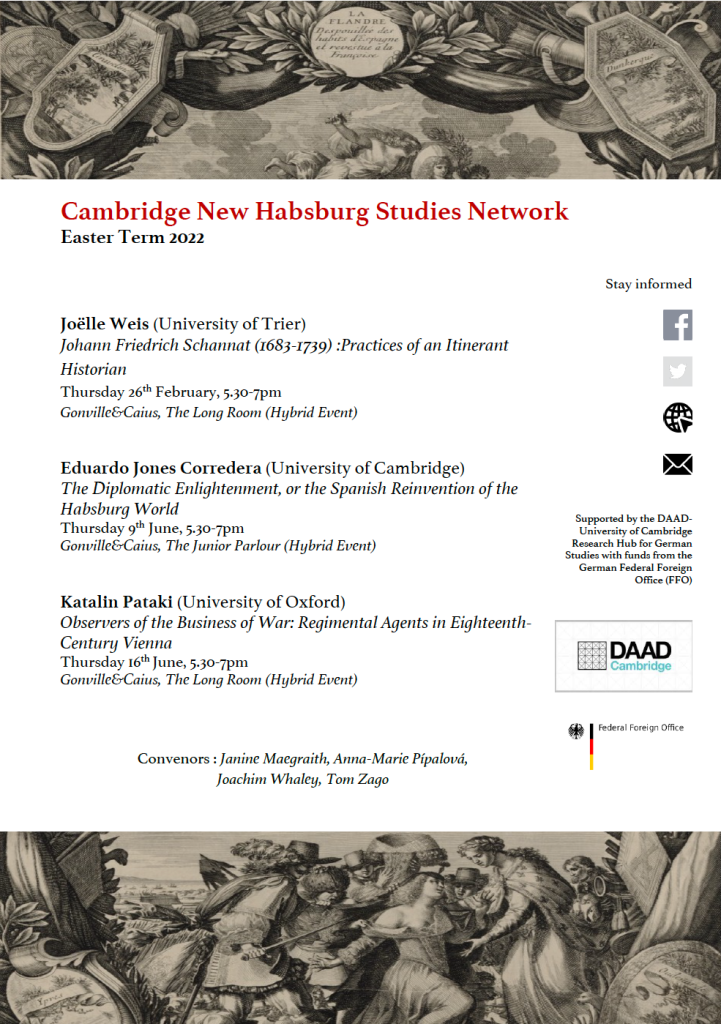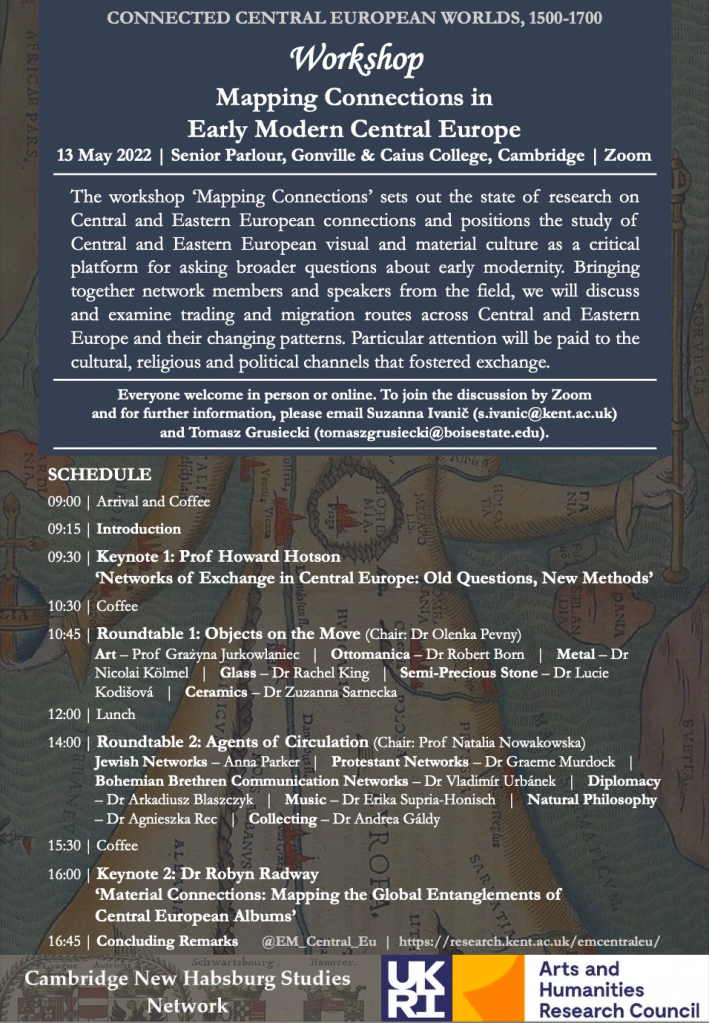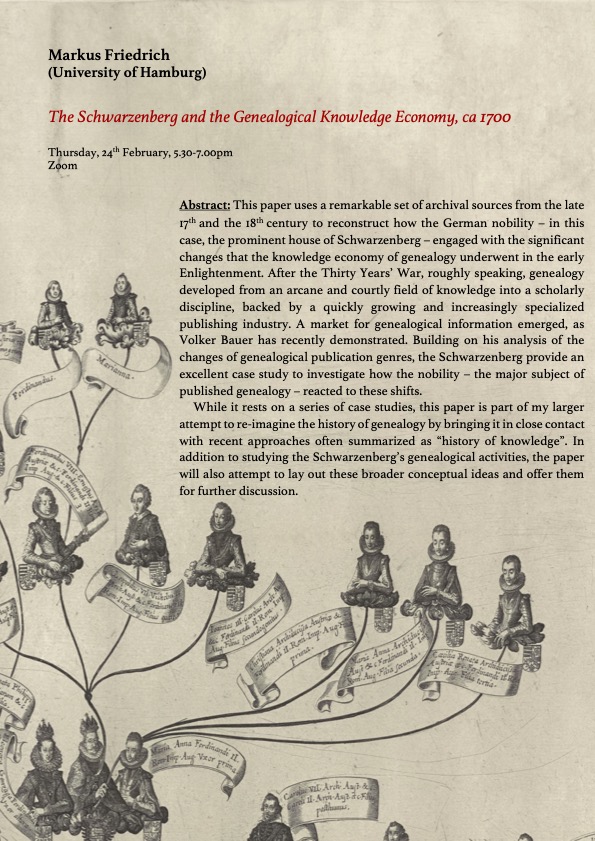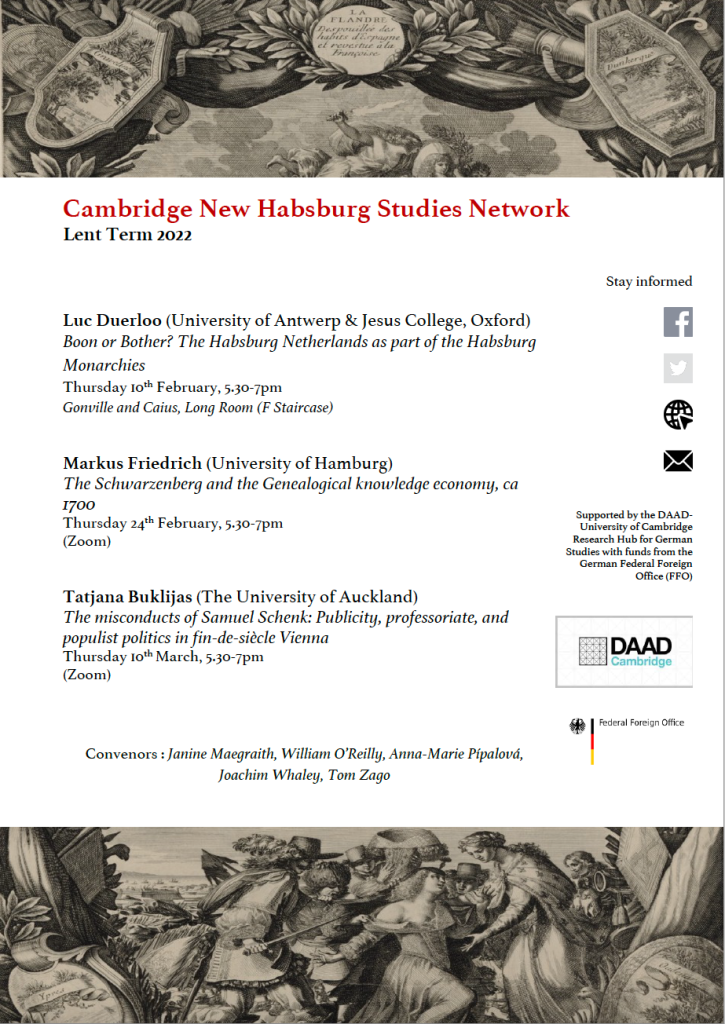WELCOME TO THE CAMBRIDGE NEW HABSBURG STUDIES NETWORK ……………………………………………………………………………………………………………………. Supported by the DAAD Cambridge Research Hub with funds from the German Federal Foreign Office (FFO)
The network aims to promote Habsburg studies in Cambridge by exploring new approaches to the history and cultures of Central and Eastern Europe, including the new methodologies of gender studies and social history. The network offers scholars the opportunity to present their research on any aspect of Central and East Central European history and to discuss current debates within the field. It provides a forum in which Cambridge researchers can exchange ideas both with others in Cambridge and with visiting scholars, especially those from Central and East Central Europe.
Forthcoming Talk: Violet Soen (KU Leuven)
Violet Soen (KU Leuven)
Choosing Austria? Transregional Lordship of the Croÿ family between Valois, Burgundy and Habsburg
Thursday 25th November, 5.30-7pm
online event
ABSTRACT :
The Habsburg dynasty arrived in the Low Countries through the hastened 1477 marriage of Maximilian of Austria to Mary of Burgundy. This Austrian match left the Burgundian aristocracy divided, as some main noblemen had advocated an alliance to a French prince to pre-empt war on the southern border. At the same time, the French monarchy actively sought to attract as much as possible malcontent noblemen in their sphere of influence, even more so when Mary of Burgundy died in 1482 and the regency for her son Philip the Fair brought about internal division and civil war. Traditionally, the division of the Burgundian aristocracy has been presented as a result of ‘choices’ made by these nobilities around 1477, or ‘decisions’ made after the new borderlines of the Habsburg-Valois treaties of Arras in 1482 or those of Senlis in 1493. This paper aims to revisit this paradigm, by unravelling how the house of Croÿ rather hedged the bets between Valois and Austria, while also carving out the stakes in the Mediterranean projects of Europe’s ruling dynasties. To pursue their transregional lordship in times of shifting borderlines, they relied on different mechanisms, from instrumentalizing their kin networks across the Franco-German frontier, to appointing their scions on episcopal sees in the borderlands, pursue well-timed cross-border marriages and participate in the Mediterranean wars and crusades of their times. As such, the Croÿ strategy also accounted for the geopolitical strategy upon the emancipation of the first Habsburg duke of Burgundy, Philip the Fair, which sought to preserve peace with France while marrying into the princely dynasties ruling Castile and Aragon.
